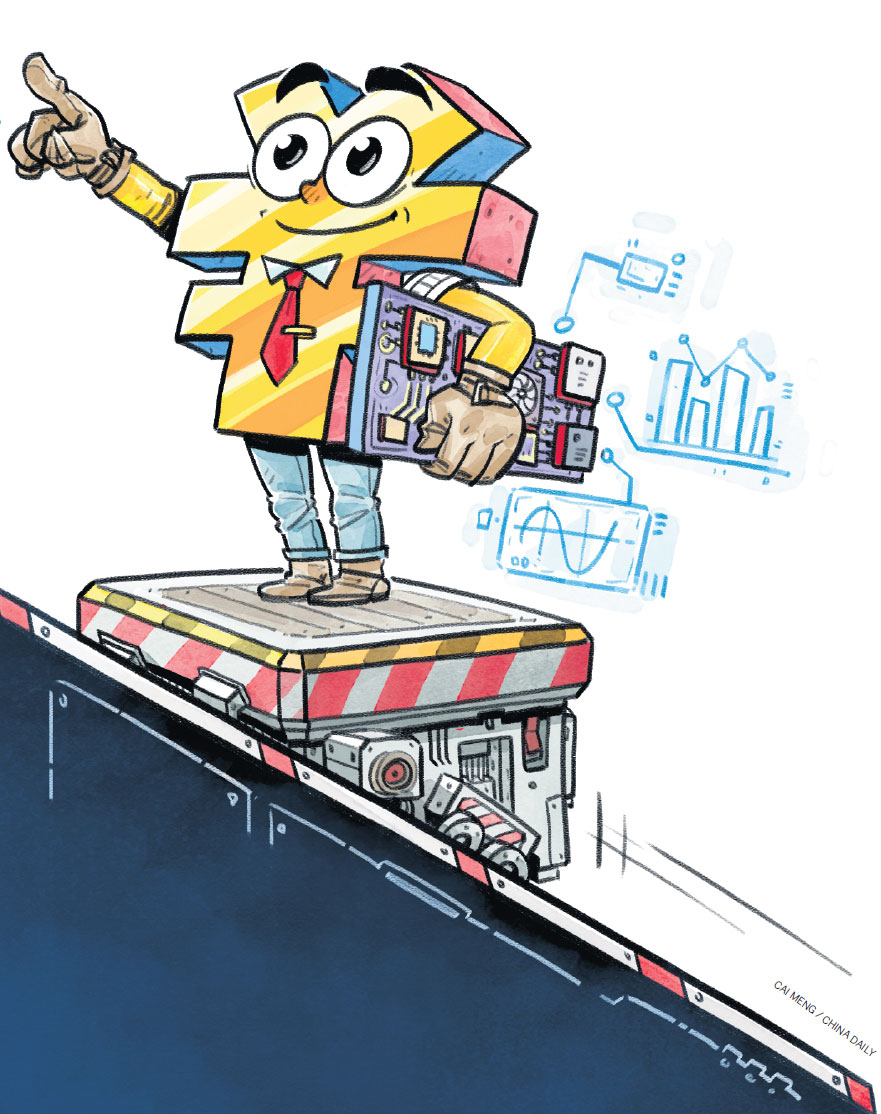Chinese economy transitions to higher value-added model


China is currently in the midst of a long-term transformation of its national business model. Earlier growth was based on the nation's comparative advantage at the time-low-cost labor combined with good infrastructure and a business environment that was acceptable for low-wage manufacturing. This business model enabled China's growth for more than 30 years and allowed it to raise almost all of its people out of extreme poverty.
Using this growth model, the country has reached the status of an upper middle-income country. But it is crucial not to get stuck in the so-called middle-income trap.
The Central Economic Work Conference last week, a gathering of China's top leaders to discuss economic issues and reform plans in detail, decided China will deepen supply-side reform and will maintain its proactive fiscal policy and prudent monetary policy.
Contingency plans are prepared to deal with "rising downward economic pressure amid intertwined structural, institutional and cyclical problems."
There has been a lot of breathless talk in the press about the decline of the GDP growth rate in the third quarter of 2019 to 6 percent, which is the slowest in 27 years. And, next year's GDP growth rate numbers are expected to be at around 6 percent or lower.
But this decline in raw GDP growth is to be expected and should be considered a sign that Chinese macroeconomic policymakers are allowing the economy to make the transition to slower but higher quality growth. This is much better than if they were using excessive monetary stimulus to try to maintain the old growth model.
Trees don't grow to the sky and no country can grow at 7 or 8 percent forever. China's 40-year run of growth at that level is unprecedented. Such growth is possible only in a situation where large inputs of capital are needed and where the country is a follower using well-known international technology. China has outgrown that stage and now has to focus on leading-edge technology and on efficiency improvements.
In order to enable the transformation to an economy based on higher value-added production and sustainable demand, the government has emphasized structural reforms and is taking a large number of systematic steps to enable the economy to move up the value scale.
Recently, the government has focused on improving the business environment for both domestic and foreign companies. In the World Bank's latest Doing Business 2020 report, which traces how world economies are implementing reforms to encourage efficiency and support freedom to do business, China's overall ranking climbed 15 places to number 31 in the world.
The October 28-31 Fourth Plenary Session of the 19th Communist Party of China Central Committee explicitly set, for the first time, "promoting modernization of the country's governance system and governance capacity" as the overall goal of comprehensively deepening reform. This stress on the rule of law in economic and other affairs is hugely important in that it provides a level and predictable playing field for competitive companies.
Also, this year, taxes on the private sector were cut by about 2 trillion yuan ($286 billion). The Central Economic Work Conference signaled that these tax cuts will continue or be increased. Furthermore, banking reforms are encouraging banks to make capital available to small businesses.
Recent reforms also encourage international companies to compete in the Chinese domestic market. For example, the government has switched to a negative list-meaning that foreigners can invest in any sector not explicitly prohibited.
Plus, in many sectors, foreign companies are now allowed 100-percent ownership and are treated the same as domestic companies. This foreign competition will increase the competitiveness of the already highly competitive Chinese economy by forcing all companies to compete at the highest international standards.
Investing in scientific and industrial research and development allows China to move to the leading edge of science and technology. Building the infrastructure to take advantage of the coming fourth industrial revolution based on artificial intelligence, 5G, and the internet of things is preparing China for the economic opportunities of the 2020s.
No transition is painless. As new higher value-added industries develop, some of the old industries will have to move or go out of business. Some companies that had business models dependent solely on cheap labor will not be able to keep up with the upgrading process. It is important not to try to preserve zombie companies that cannot compete in the new economy.
The success of many companies in making the transitions is confirmed by the data showing that profits of the high-tech manufacturing sector rose 7.5 percent year-on-year from January to October. Companies are being rewarded for real improvements in product quality or productivity.
Some people will lose their jobs, but that is to be expected and is normal. It is actually good, provided that most of them are able to find other, often better-paying jobs, in rising industries. In recent years, the government has strengthened the social safety net to make the transition easier for workers.
How do we know the transition is working? Though not mentioned as often as metrics such as the topline GDP growth rate, the growth of real average wages is actually the best measure of how well an economy is doing. After all, the whole purpose of economic growth is to make a nation's people better off.
Companies cannot pay workers more unless they are producing and selling more valuable products. Average yearly wages increased from 37,143 yuan in 2010 to 82,461 yuan in 2018, according to the National Bureau of Statistics. Adjusting for inflation, this means that real wages have more than doubled. This would not be possible unless both the value-added of products has gone up and the skill-level of the workers has gone up.
It's also a good thing that workers are able to move out of low-skilled jobs to higher-paying, higher-skilled ones. A list of 100 professions that have major workers shortages recently issued by the Ministry of Human Resources and Social Security found that vacancies for sales positions, cashiers, restaurant waiters, security guards and custodial workers topped this list. Of course, this demand for low-skilled labor will drive up wages-making average people better off.
There is also strong demand for skilled manufacturing professionals, including lathe operators, and porters, according to the ministry.
Some stimulative macroeconomic policy may help smooth the transition and make it easier for companies and workers to adjust. It is crucial that stimulus will not be used to halt the transition to slower but higher quality growth. Instead, enabling China's transition to a higher income, higher tech, higher value-added economic model is the key goal of policy.


































